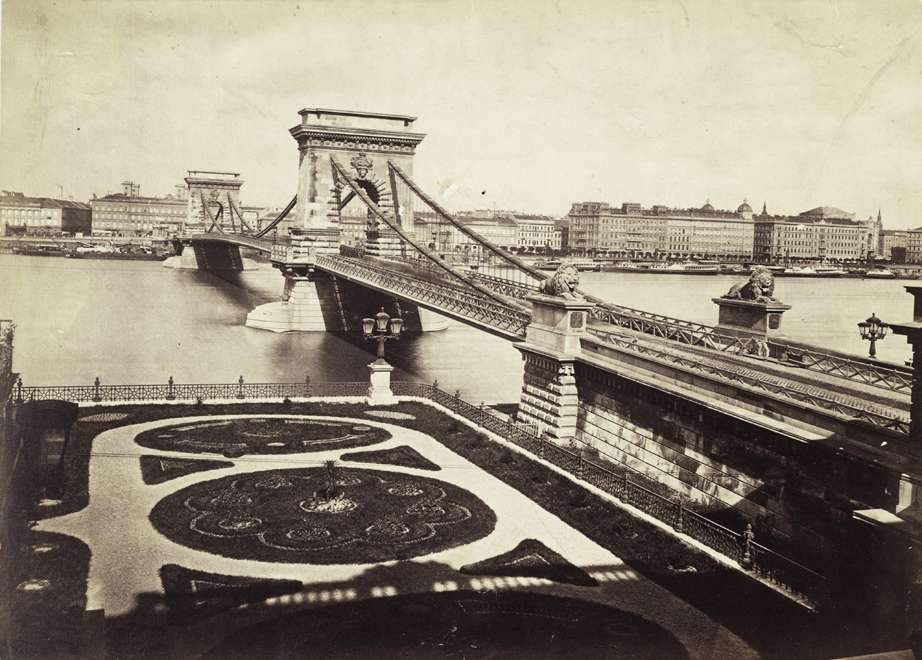Pest-buda or Budapest? The birth of a capital city

Although today it would be challenging to imagine Buda without Pest and the other way around, the two parts of the Hungarian capital were actually quite distant in social and economic aspects, making up two different cities, until 1873.
Although Buda was the residence of the Hungarian king on several instances, becoming the Kingdom’s capital city, in the 19th century it was Bratislava where (Pozsony) the parliament was held, the king resided in Vienna, while the governor was assigned to Buda. This, however, was not viable, as Bratislava was exposed to attacks both from the west and the east. It seemed reasonable to move the capital city to the middle of the country, given the historical background of Buda and the financial aid the commercial Pest could provide the previous with. Add the Danube as the perfect route for pleasure and business (trade mostly) to the mix, and the argument is done with.
The capital moves to Buda once again.
The population on both sides grew exponentially, numbering 29 thousand residents in Buda and 25 thousand in Pest in the 1800s, and then 50 thousand in Buda and 130 thousand in Pest in 1848. Since Pest was the centre of commerce and trade at the time, no wonder it was flooded by craftsmen from the rural areas. The expansion of the city was needed as well, as to house the newcomers, but helping Pest grow had other reasons too besides the commercial and social ones: the 1838 flood destroyed over half of the city. So in the 1830s and 1840s, the main goal was to restore Pest and to build a solid base for a flourishing European city.

photo: fortepan.hu
During the 1848-49 Hungarian Revolution, it was necessary to unite the two sides even if they were reluctant at first. Most of the politicians agreed with István Széchenyi – who was one of the prominent political figures of the age, being a member of the ‘Batthány Government’ (the first Hungarian government) – that survival can only be ensured via a union between Buda, Pest and Óbuda.
Even though all three sides weighed in the argument over the union, it was mostly Buda and Pest that lead the quarrel. Despite the shared history of the two cities, their living manners, their traditions and identities could not have been more different. Pest was a city that was moving forward, keeping up with the changes in Europe thanks to merchants, while Buda was neglected infrastructure-wise, it functioned more like a military station than as a modern city, it had serious financial issues, and the locals were less lively and outgoing than in Pest.
This slow development is more than surprising, given that Buda was the capital city for centuries.
The actual reasons given by the two cities could not have been more clear-cut and obvious: Buda did not want to share its position as the ‘leader’, while Pest was afraid of the financial hardships that Buda would bring to the ‘marriage’. But war changes everything, as we have learned from history. Eventually, both sides gave in, and a formal union came into being in the spring of 1849.
The man to whom we can informally thank Budapest is no one else but Count István Széchenyi: he initiated the building of a permanent bridge between Pest and Buda, which not only made commute easier but physically united the two cities.

photo: fortepan.hu
It caused a lot of headaches for Széchenyi to settle on the perfect name for the new Hungarian capital city. He hated the name ‘Pest’ as it reminded him of the German words ‘pest’ and ‘peste’ connoting pestilence. After years of struggle and throwing away lavish ideas like Bájkert (Garden of Charm), Dunagyöngye (The Pearl of the Danube), Etelvár (Etel’s Castle – Etelköz is where the Hungarians briefly settled before arriving in the Pannonian Basin), Hunvár (The Huns’ Castle – the Huns are considered by some to be the ancestors of Hungarians).
His favourite one was Honderű, and even though it had a positive and encouraging meaning in Hungarian, made up of the words ‘hon’ – ‘native land’ and ‘derű’ – ‘joy’, it was very similar to the French words ‘honte’ – ‘shame’ and ‘rues’ – ‘streets’.
Pest-Buda was to be the name of the new European city, but there were practical issues with this name. Like, if one was to draw up a map of the city, they had to put the name ‘Pest’ on the side that gives a home to the Buda hills and the Buda Castle, while the name ‘Buda’ would denote the commercial city, Pest. So the order was reversed, and a couple of decades later, on November 17th 1873, Budapest became an official city, with 54 thousand people living in Buda, 200 thousand in Pest, and 16 thousand in rural Óbuda.
After the union was signed, the reshaping of the city commenced with the expansion of the narrow streets into boulevards and avenues, the destruction of ground level houses to give place to multi-story apartment blocks, the main roads and streets were connected, and an efficient sewage system was also built. Because of the avenues, hundreds of houses were demolished, take for example the Nagykörút, where tram 4-6 commutes: here only one house stood standing. During the building of the Elizabeth Bridge, almost 300 houses were returned to dust, destroying the downtown of Pest at the same time.

photo: fortepan.hu
Source: Daily News Hungary





